Related Content
Content
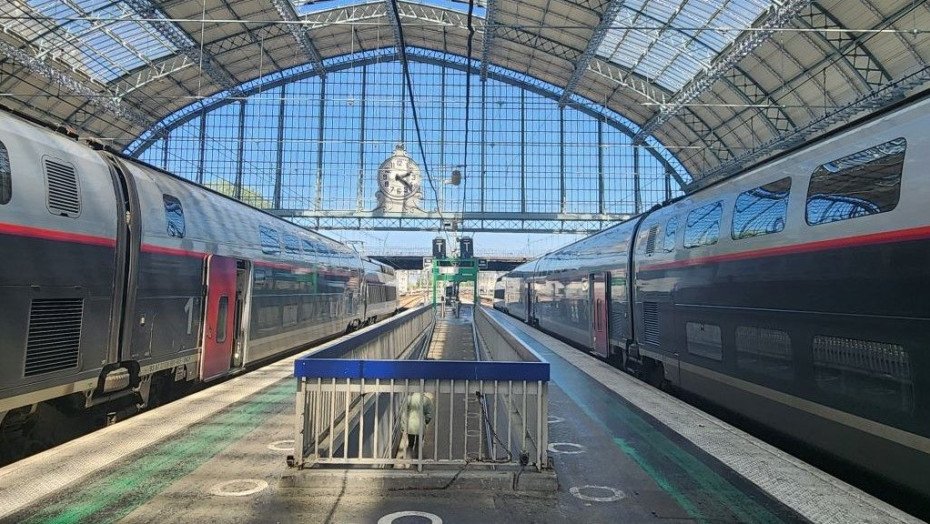
Travelling on French trains
What you can expect on board the different types of French rail services and how the tickets can be used.
Share
Welcome to our guide to travelling by train in France which explains the differences between the types of train service, the on board facilities and how to find your seats when you have a reservation.
So grab a coffee and discover all the most pertinent info that will help your French train travel experience to be as fabulous as possible!
French TGV trains are iconic and the high speeds can give many journeys a wow factor, but other French trains can also be fabulous, we’re big fans of the exceptionally large windows on many of the more modern TER trains.
Though we’d love travelling by train in France even more, if the windows on the French trains in general were washed more often!
And that’s just one of the many quirks of train travel in and to/from France; hence the info you'll find below.
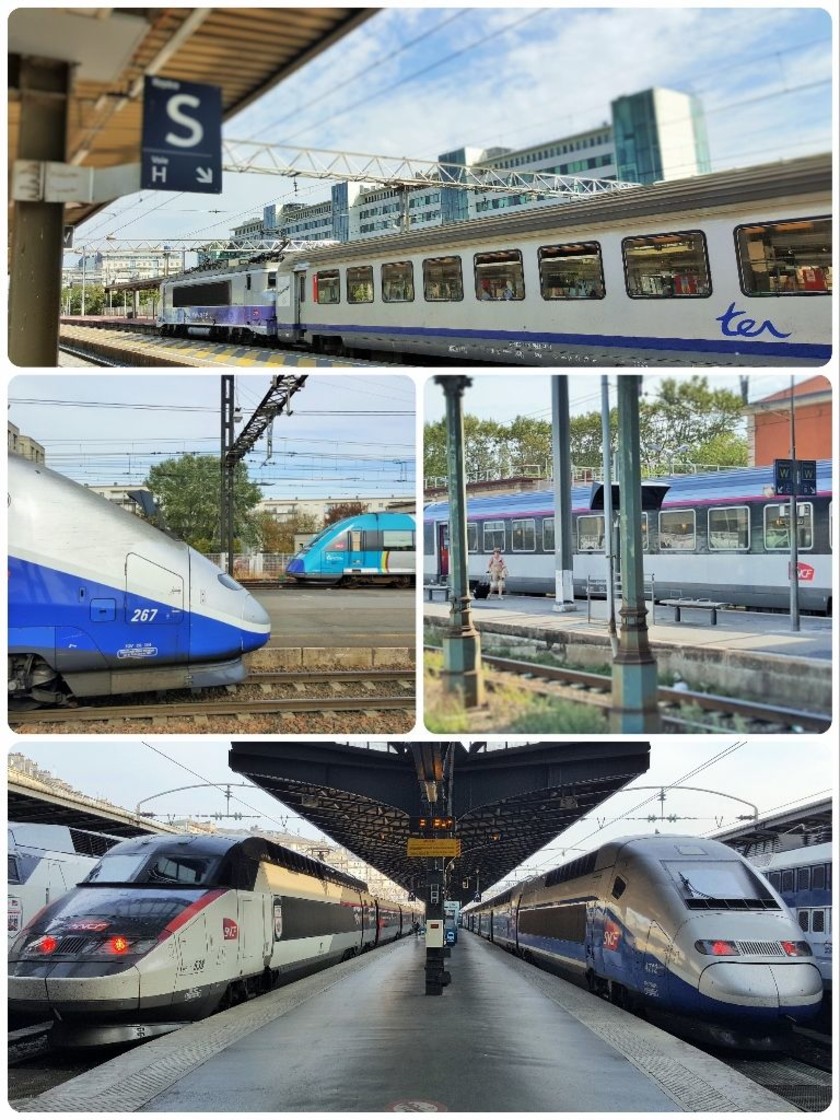
What are the different train services operated by SNCF?
French national train operator SNCF's domestic train services can be broadly divided into six categories; InOui, Ouigo, Intercités, Nomad, TER and Transillien.
Why these distinctions matter
Having some awareness of the differences between these five train services: InOui, Ouigo, Intercités, TER and Transillien matters when travelling by train in France, particularly when there is a choice of train service between two destinations.
Not only can one type of train be faster than another, it also affects booking tickets.
For example, the terms and conditions for travelling by TGV InOui trains are very different to those for journeys by TER trains.
Tickets are also usually specific to each type of train, so you cannot board a TGV InOui service with a ticket booked for a journey by a TER train etc.
1: the 'TGV InOui' trains
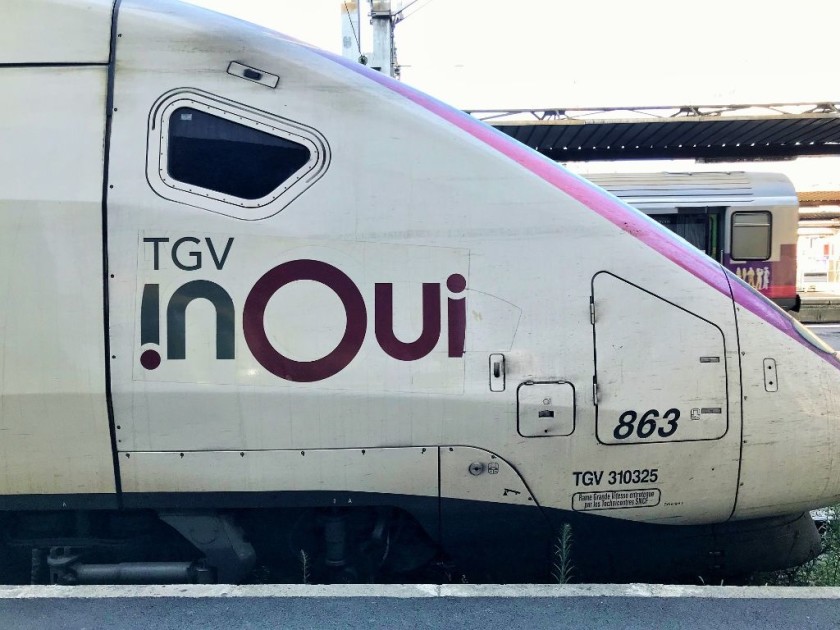
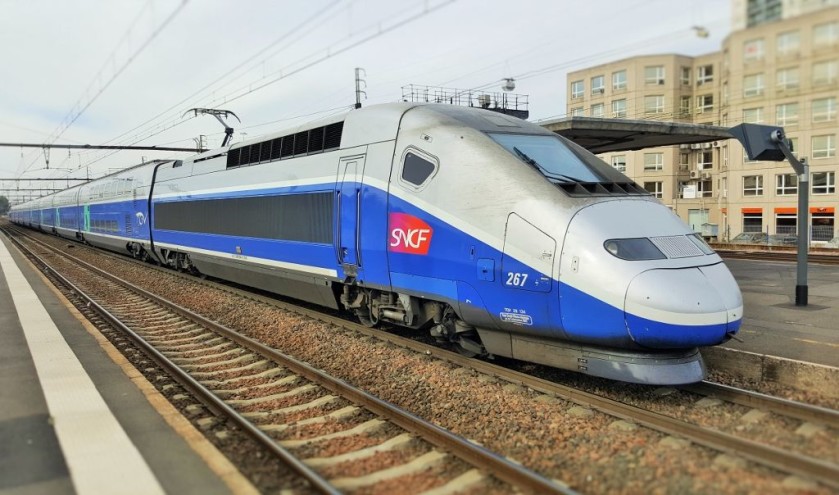
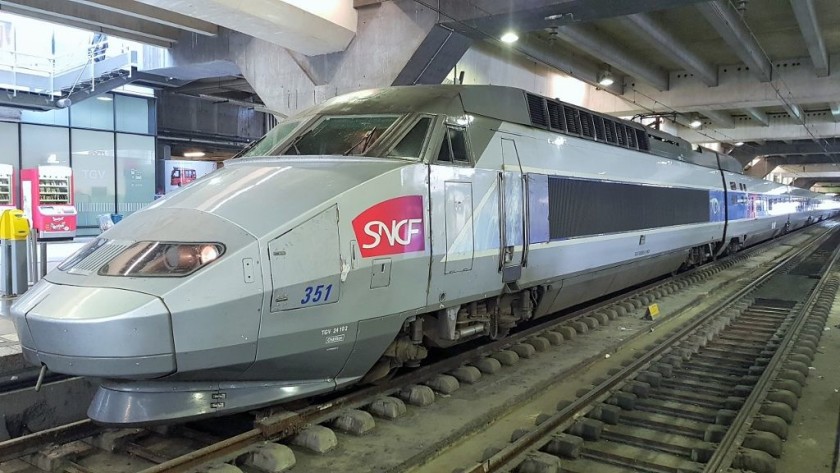
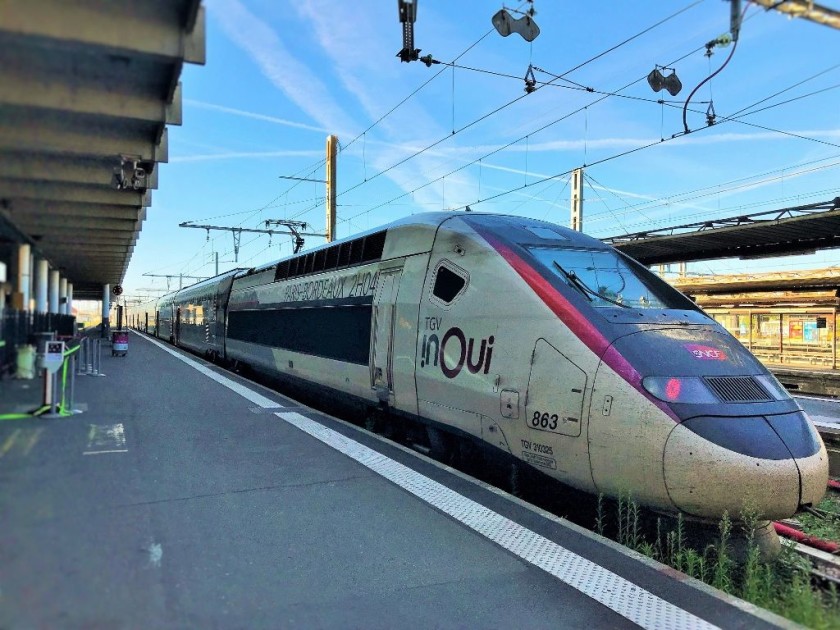
The TGV InOui services are high speed trains that use high speed lines for at least the majority of a journey.
Previously only the TGV trains that have both enhanced Wi-Fi and new or modernised interiors had this branding, but SNCF is now classifying all of its standard (superior) TGV trains as InOui services.
There are FOUR types of TGV trains used on TGV InOui services:
- TGV Duplex trains; double deck TGV trains, most of which now have enhanced Wi-Fi and a modernised interior.
- The single deck TGV Pos trains; now only used on a few routes in northern and eastern France,
- The TGV Atlantique trains; used on some departures on the routes between Paris and Western France
- The new TGV Océane trains; which are gradually replacing the TGV Atlantique trains.
There are also international TGV trains which travel between Bruxelles and cities in France other than Paris; and these are classified as 'TGV' services when travelling between French stations.
How to check which type of TGV train you will be travelling by on a specific departure.
Those double - decked TGV trains:
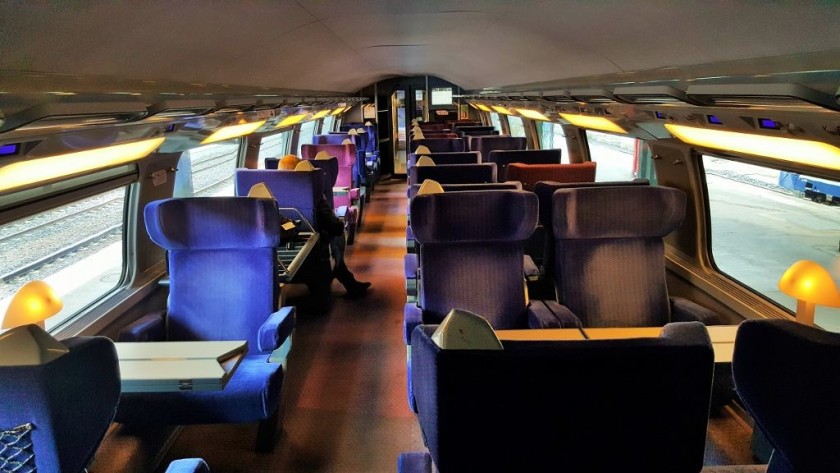
The new TGV Océane trains are double-decked and they are a big step-up in terms of on-board ambience compared to the older TGV trains, but for the time being the most commonly found double-decked TGV trains are the TGV Duplex trains.
Some travellers target those trains, presuming (wrongly) that they will be more spacious, and there’s also the novelty factor of travelling at high speed on an upper deck.
Whether a TGV InOui train service is operated by a TGV Duplex isn’t listed on timetables; you won’t know whether a service is operated by a TGV Duplex until you book and are offered the choice of seats on an upper or lower deck.
Though we have worked out a means of discovering which type of TGV train will be used for a specific departure - discover how to do this HERE.
However, TGV Duplex’s are used on virtually all TGV services between the Gare De Lyon and other destinations in France, as well as some international services from the Gare De Lyon.
They're also used on virtually all the TGV services between Lille and destinations to the south of Paris.
TGV Duplex trains are also used on some departures to/from Paris Est, plus a few trains to/from Paris Nord and Paris Montparnasse
2: the Ouigo (Grande Vitesse)
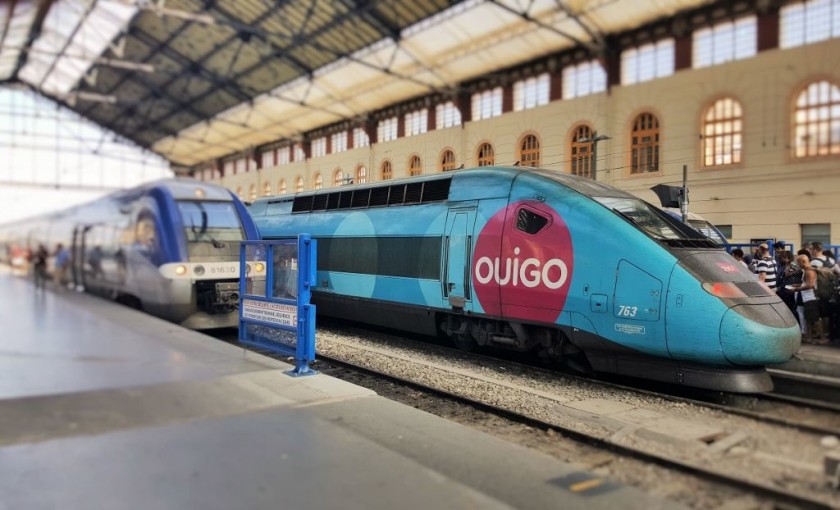
The Ouigo Grande Vitesse services are low cost, more basic high speed services on which re-modelled double-deck TGV trains are used.
In contrast to TGV InOui services, Ouigo trains:
- are 2nd class only,
- have no catering facilities available,
- require pre-booking for pushchairs/strollers,
- have different luggage allowance,
- have more restrictive ticket booking options, including the fact that tickets can't be refunded.
- have a different boarding procedure - you need at the entrance to the voie (platform / track) no later than 5 mins before departure.
Another difference to the TGV InOui services is the option to pay supplements for additional services such as seat selection and additional items of luggage
Something to be aware of, is that Ouigo services now offer direct alternatives to the standard TGV InOui services, on an increasing number of routes.
On the latest timetable changes, some TGV InOui departures have in effect been replaced by Ouigo trains, to provide travellers with a choice of services between the exact same stations.
3: the Intercités trains
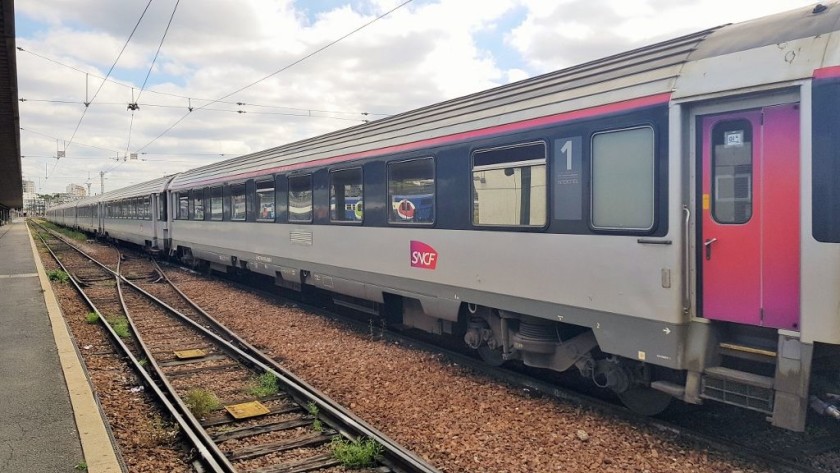
The Intercités services are the French express train services which DON'T travel on high speed lines.
Some Intercités services/journeys have compulsory reservation, but most don't.
To make this clearer, IC (France) has been used on ShowMeTheJourney for the services that DON'T have compulsory reservation.
4: The TER services
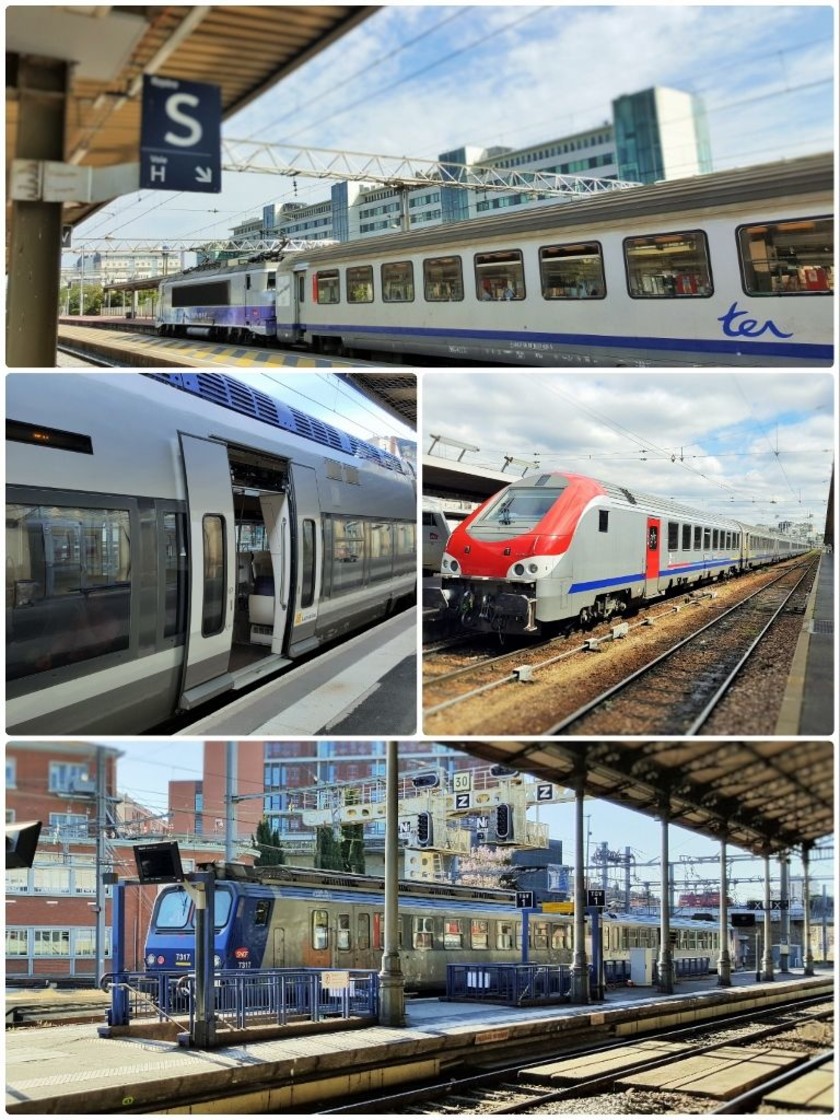
The TER services comprise a mix of:
- Regional semi-fast services that can link major cities, often stopping at towns skipped by TGV and IC trains
- The services on some of the non high-speed routes to and from Paris (see belpw)
- Long distance stopping train services
- Local train services away from the main cities
A wide variety of different trains are used on TER services and in many areas of France the most modern trains are the TER trains.
Though what's particularly worth knowing is that no matter what TER service you will be travelling by, seat reservations won't be available.
Also tickets won't be discounted if you book in advance (except for some routes to/and from Paris), so you may as well book tickets last minute at the station.
5: The Nomad services
This group of services operate between Paris St Lazare station and destinations in Normandy including Bayeux, Caen, Cherbourg, Le Havre and Rouen
Until a few years ago they were Intercités services, but when new double-decked trains were introduced they became Nomad services.
So what's unusual about these services is that they use the same new double-deck trains now found on other longer-distance TER routes , but the ticketing is still similar to booking journeys by the Intercités.
Meaning that significantly discounted tickets will be available if you book ahead.
6: The Transillien services
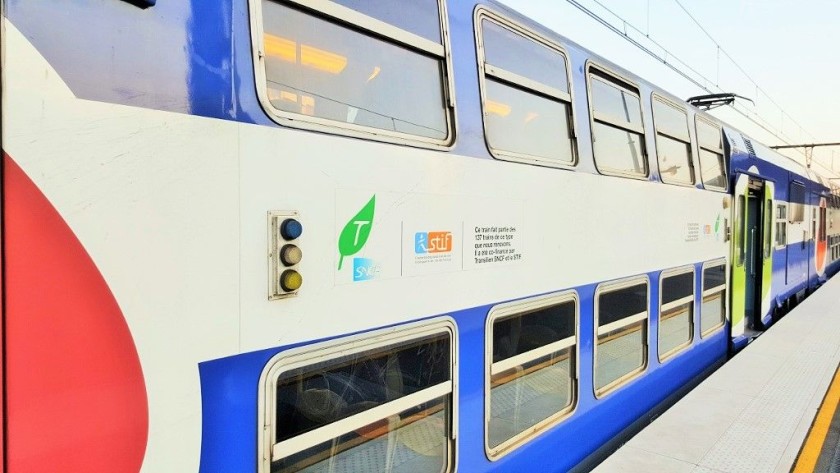
The longer-distance commuter/local train services in the Paris area operate under this branding, so these services link many of the towns around the capital to the city centre.
Does it matter which train I travel by?
Yes it does because French train tickets are usually train service specific - book a ticket online or a station which is only valid for a journey by a TER train service and you can't then take a TGV or Intercités train service.
Similarly you can't book a ticket for an Intercités train service and then hop on a TGV instead.
How do I find my reserved seat?
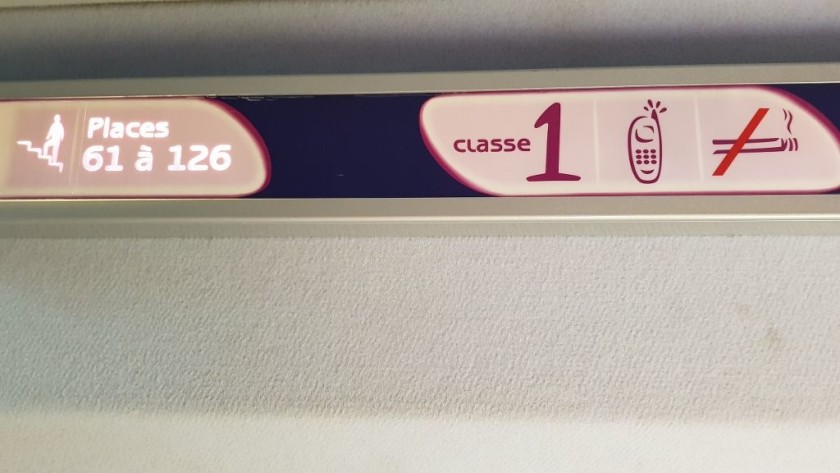
All seats are reserved on TGV InOui train services and this is also the case on the longer Intercités routes - your seat number is the 'PLACE ASSISE' number on your ticket.
The seat numbering system on TGVs and Intercités isn’t particularly logical, so take your time and be guided by the signs in the coach.
If you have heavy luggage, stow this in the racks by the doors first and then locate your seat.
What can be easy to miss when boarding TGV Duplex trains are the signs above the entrances inside the doors, which show the seat numbers that are located on the upper deck, up the staircase.
What is a train number and how do I use it?
Each individual train departure has its own number and this number will be printed on your ticket/reservation.
It will be a 4-digit number that is usually listed beneath the departure date/time - the departure time will have a 'H' between the hour and minutes.
If you will be changing trains, the train number (and departure times) of each train you will be taking, will be listed separately on the ticket
To find your train you may need to match this train number (and not your destination), to the information that's displayed on departure screens at stations.
On board TGV InOui & Intercités trains:
Wi-Fi:
Enhanced Wi-Fi connectivity is the key distinguishing feature of the new and modernised trains used for theInOui services; those which are listed as 'TGV InOui' on the ticketing websites
It should theoretically be available when travelling by other InOui services (those which are listed as 'TGV' on the ticketing websites) on these routes:*
- Paris Gare Du Nord - Lille/Dunkerque/Valenciennes
- Paris Gare De Lyon - Lyon/Marseille/Montpellier/Nice/Perpignan
- Paris Est - Luxembourg/Nancy/Strasbourg
- Paris Montparnasse - Bordeaux/Toulouse/Hendaye/Tarbes/Rennes/Brest
*It should be available on any TGV between these locations, you don't have to be travelling on trains between these specific destinations.
Though even when it is theoretically available it can be more miss than hit
Wi-Fi is NOT available on the Intercités services.
Announcements:
All on board announcements on domestic trains are French language only.
The train conductors may not speak English on IC and TER trains; particularly those that don’t serve Paris.
Catering:
SNCF doesn't provide restaurant cars on any of its trains services, the TGV InOui services have Bars, but the food available isn't particularly exceptional.
Similar Bar facilities MAY also be available on the longer distance Intercités trains.
So if you will be travelling long distance on journeys within France, the recommendation is to buy food/drink at the station before boarding.
It is usually cheaper and better quality than on the TGV or Intercités; and in our experience you can’t wholly rely on the bar being open at all on the TGV or Intercités services
Taking a bicycle on TGV InOui or Intercités trains:
On TGV InOui and Intercités train services folded bikes are classed as hand luggage,
On Intercités and SOME* TGV InOui services, non-folding bikes require a ticket which costs a flat rate of €10.
*The exception is that standard non-folding bikes cannot be taken on board TGV Duplex trains.
Though if you can remove the front wheel of a non-folding bike, so that the wheel and the rest of the bike can be placed into a bag no bigger 120cm x 90cm, you can take it on board those trains as hand-luggage.
Taking a bicycle on TER train services:
Bikes can be taken at no additional charge on TER trains and many of the latest types of TER train have designated bike storage areas - look for the symbols on the outside of the coaches.
More information is available below
Good to know about timetables:
Regular timetables, trains leaving at the same time in each hour during the day, are the exception rather than the norm in France.
However, outside of Paris, in the middle of the day, you can expect trains to be departing at least hourly on the Cote D'Azur routes around Nice and on some routes from Lille and Lyon, but this is not the norm elsewhere.
Though a recent change is that regular times are being used more often, meaning that, for example, a service will depart from a major city every day at 12:05, but it will be heading to different destinations, depending on the day of the week.
So keep in mind that:
- Many train services/departures only operate on certain days of the week and few train services operate at regular intervals (leaving at the same minutes in every hour).
- TGV InOui services operate at least once an hour throughout the day between Paris and both Lille and Lyon.
However, on other TGV InOui routes the service can vary from a train every 30 mins at peak times, to gaps of two hours or more between trains in the middle of the day. - Regional TER trains also tend to operate to very sporadic timetables, 1 x train per hour is the exception rather than the norm, on many TER routes there can be gaps of 3-4 hours between trains.
- Local services operate tend to operate at least hourly on routes to/from Paris, Lille, Metz and Nice, but other cities have more sparse services.
Look for a journey guide
International trains:
Reservations are compulsory on virtually ALL long distance express trains services to/from France - also note the use of the word 'services', an unusual aspect of international train travel from and to France is the branding which is applied to many routes.
However, when French TGV trains are used on these international services, there is little difference between the passenger ambience within these trains and the TGVs used on journeys within France.
On the lists below, the destinations in brackets are served by some departures only.
Thalys
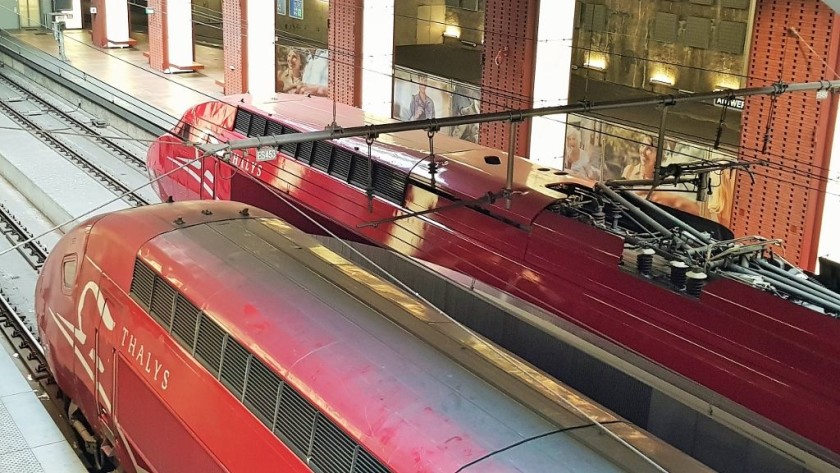
Thalys trainsoperate on these three routes:
- (Dortmund – Essen – Dusseldorf) – Koln/Cologne – Aachen – Liege – Bruxelles Midi/Zuid – Paris gare du Nord
- Amsterdam – Schiphol – Rotterdam - Antwerpen/Anvers – Bruxelles Midi/Zuid – Paris gare du Nord
- Amsterdam – Schiphol – Rotterdam - Antwerpen/Anvers – Bruxelles Midi/Zuid – Lille Europe
IC Belgium
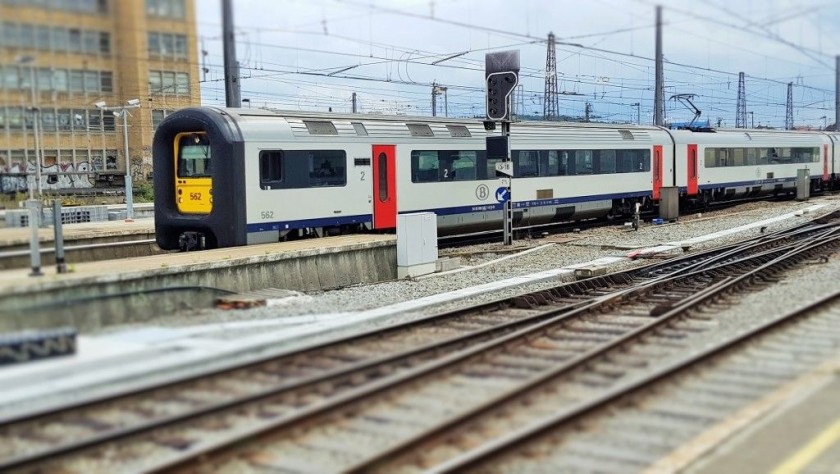
Belgian IC trains operate on these two routes:
- Antwerpen/Anvers – Gent – Kortrijk – Lille Flandres (change of train many be required at Kortrijk)
- Mons – Tournai - Lille Flandres (change of train may be required at Tournai)
TGV Bruxelles-France
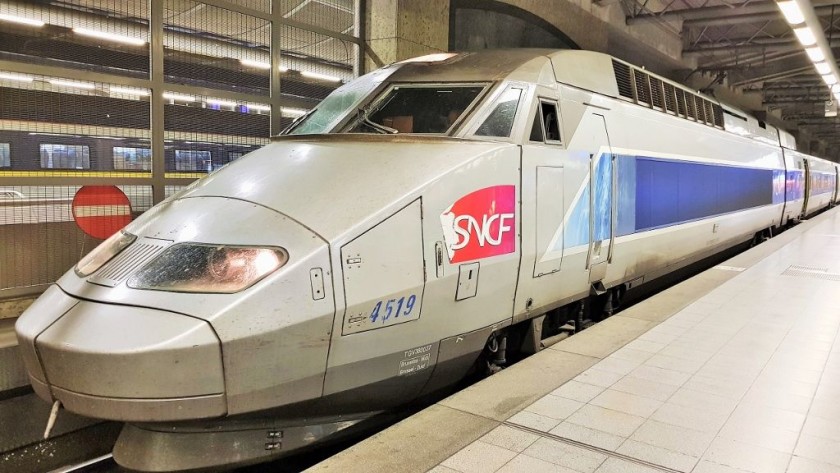
TGV Bruxelles-France trains operate direct between Bruxelles Midi/Zuid and many cities in France.
By taking these trains you can avoid the awkward transfer between stations in Paris.
Stations in France that have direct TGVs from Bruxelles include:
Aeroport Charles De Gaulle, Aix-en-Provence TGV, Avignon TGV, Lyon Part Dieu, Marne La Vallée, Marseille St Charles, Montpellier, Nimes, and Strasbourg.
Eurostar
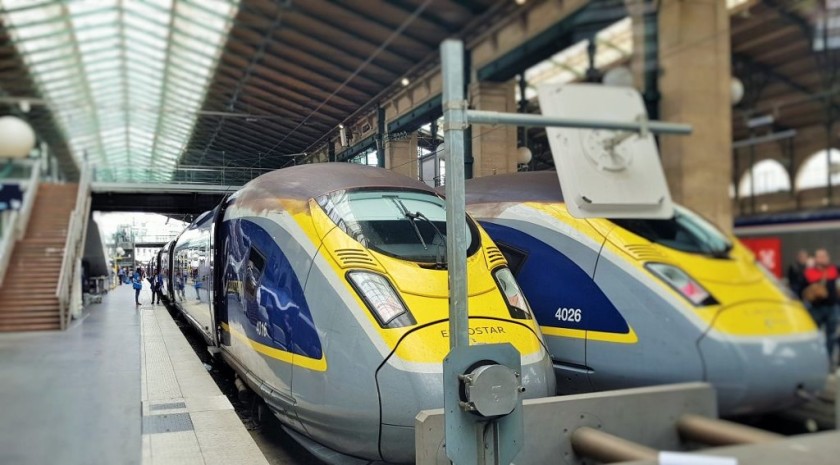
Eurostar trains now only operate on this route; London St Pancras International ↔ Paris Gare du Nord
Lyria
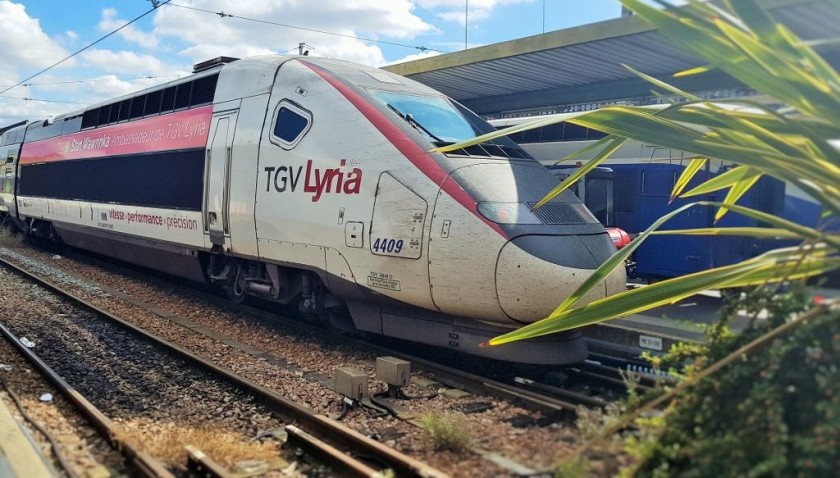
Lyria trains operate on these routes:
- Paris gare de Lyon – Geneve – (Lausanne)
- Paris gare de Lyon – Dijon – Frasne (connect for Neuchatel) - Lausanne
- Paris gare de Lyon – Dijon – Mulhouse – Basel – Zurich
- Geneve – Lyon – Avignon – Aix-en-Provence – Marseille (summer only)
Double deck Duplex trains are now used on all Lyria departures
AVE - RENFE
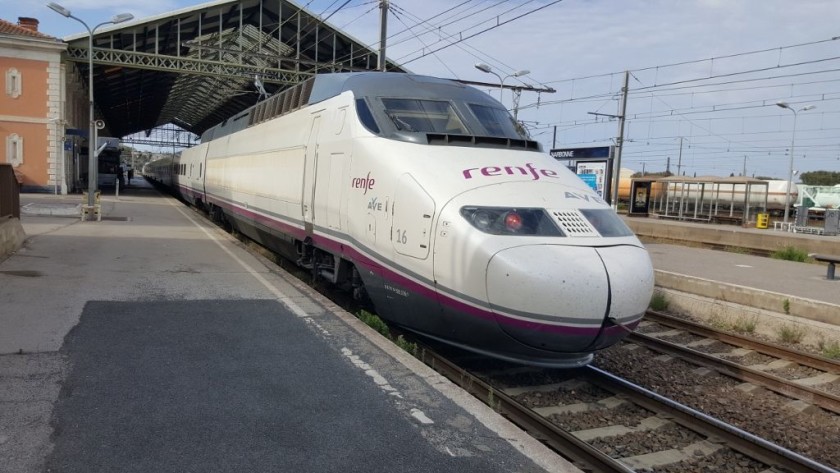
AVE- RENFE trains operate on these two resumed routes.
- Marseille – Nimes – Montpellier – Narbonne – Perpignan – Figueres/Figueras – Girona/Gerone – Barcelona/Barcelone – Camp De Tarragona – Zaragoza – Madrid
- Lyon – Valence – Nimes – Montpellier – Narbonne – Perpignan – Figueres/Figueras – Girona/Gerone – Barcelona/Barcelone
DB – SNCF services
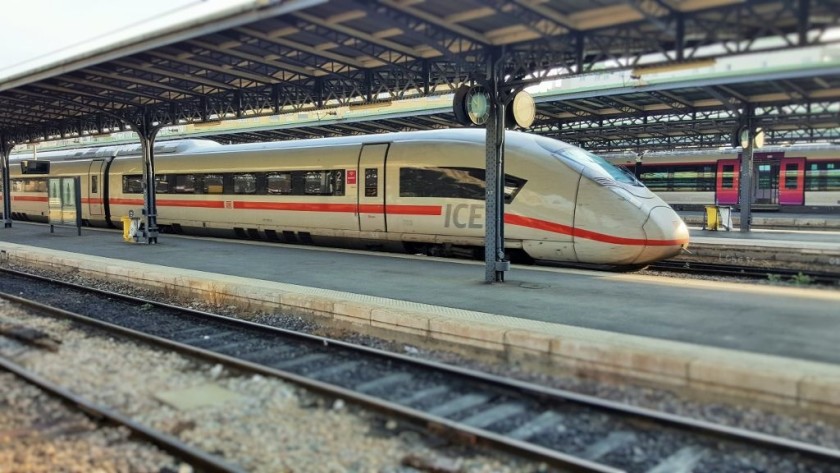
- Paris Est – Strasbourg – Karlsruhe – Mannheim – Frankfurt (Main) (some trains on this route are ICE-3 trains, others are TGV Duplex trains)
- Paris Est – Kaiserlauten - Karlsruhe – Mannheim – Frankfurt (Main) (some trains on this route are ICE-3 trains, others are TGV Duplex trains)
- Paris Est - Strasbourg – Karlsruhe – Stuttgart (- Ulm – Augsburg – Munnchen/Munich) (TGV Duplex trains)
- Frankfurt (Main) – Mannheim – Karlsruhe – Baden Baden – Strasbourg – Mulhouse – Lyon – Avignon – Aix-en-Provence – Marseille (TGV Duplex trains)
These routes used to be branded Alleo, but that branding appears to have been replaced by ‘Le Reseau DB-SNCF’.
Reservations are still compulsory for journeys between Germany and France by these trains, even when ICE trains are used.
Trenitalia Frecce trains
These trains now operated on a Paris gare de Lyon - Lyon-Part Dieu - Torino Porta Susa - Milano Centrale route
Services by French (SNCF) TGV trains
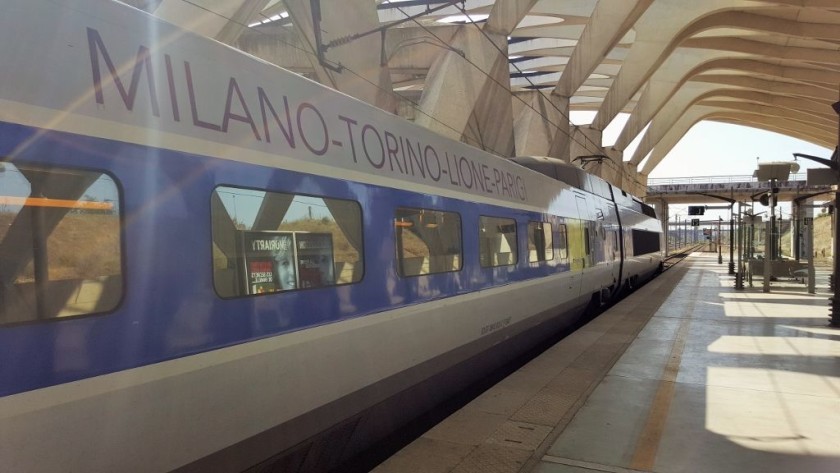
TGV trains managed by SNCF operate on these routes:
- Paris gare de Lyon – (Lyon St Exupery) – Chambery - Torino Porta Susa - Milano Porta Garibaldi - this service is usually branded 'TGV France - Italy as pictured above
- Paris Est - Luxembourg
- Marseille - Aix en Provence - Avignon - Lyon - Dijon - Mulhouse - Luxembourg
- Paris gare de Lyon – Valence – Nimes – Montpellier – Narbonne – Perpignan – Figueres/Figueras – Girona/Gerone – Barcelona/Barcelone
International TER services
French TER trains trains operate across borders on these routes:
- Lyon – Bellegarde – Geneve
- Valence - Grenoble - Chambery - Aix les Bains - Geneve
- Avignon Centre - Nimes - Montpellier - Narbonne - Perpignan - Port Bou (connect for Figueres, Girona and Barcelona)
- Strasbourg - Colmar - Mulhouse - Basel
- Grasse - Cannes - Antibes - Nice - Monaco - Menton - Ventimille/Ventimiglia
Please support ShowMeTheJourney
This second version of ShowMeTheJourney is exciting and new, so we are genuinely thrilled that you are here and reading this, but we also need your help.
We’re striving not to let anything get in the way of providing the most useful service possible, hence a facility has been set up with DonorBox which can be used to support the running costs and make improvements.
Instead of advertising or paywalls, your financial support will make a positive difference to delivering an enhanced service, as there’s a lot of ideas which we want to make happen.
So if you have found the info provided here to be useful, please go here to say thank you.

Simon Harper
I wanted to share my passion for train travel and explain how anyone can take the fantastic journeys I have taken.

This is one of more than 100 train travel guides available on ShowMeTheJourney, which will make it easier to take the train journeys you want or need to make. As always, all images were captured on trips taken by ShowMeTheJourney.
This second version of ShowMeTheJourney is exciting and new, so we are genuinely thrilled that you are here and reading this, but we also need your help.
We’re striving not to let anything get in the way of providing the most useful service possible, hence a facility has been set up with DonorBox which can be used to support the running costs and make improvements.
Instead of advertising or paywalls, your financial support will make a positive difference to delivering an enhanced service, as there’s a lot of ideas which we want to make happen.
So if you have found the info provided here to be useful, please consider saying thank you.







